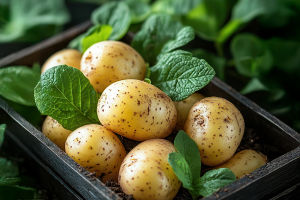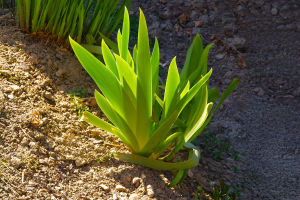When I moved into my first apartment, I made the classic mistake of buying a cute-looking plant from the grocery store and assuming it would “just grow.” It didn't. A few weeks later, the leaves were yellow, the soil was soggy, and my enthusiasm was gone.
That's when I started researching plants that actually work for beginners—and now, years later, I have a home filled with greenery that thrives with little effort. If you're new to indoor gardening or just looking for something low-stress, this list is for you.
Here are 10 beginner-friendly indoor plants that don't mind a little neglect and still look amazing year-round.
1. Snake Plant (Sansevieria)
Why it's great:
• Can survive low light and long gaps between watering.
• Leaves grow upright, making it great for tight corners.
• Known for improving indoor air quality.
Care tip: Let the soil dry completely between waterings—this plant hates being soggy.
2. Pothos (Epipremnum aureum)
Why it's great:
• Grows quickly and trails beautifully.
• Tolerates both low light and brighter rooms.
• Very forgiving if you forget to water it.
Care tip: Trim the vines when they get too long—they grow back fast.
3. ZZ Plant (Zamioculcas zamiifolia)
Why it's great:
• Shiny, waxy leaves that look fake (but they're not).
• Thrives in low light, dry air, and infrequent watering.
• Extremely hardy—even office lighting is enough.
Care tip: Water only when the soil feels totally dry.
4. Spider Plant (Chlorophytum comosum)
Why it's great:
• Easy to grow, even for kids.
• Produces “babies” that can be replanted.
• Bright green leaves with white stripes add cheer.
Care tip: Loves indirect sunlight and slightly moist soil—but not too wet.
5. Peace Lily (Spathiphyllum)
Why it's great:
• Produces white flowers indoors.
• Tolerates lower light but blooms better in brighter spots.
• Tells you when it needs water—its leaves will droop.
Care tip: Use a pot with drainage holes to prevent root rot.
6. Aloe Vera
Why it's great:
• Dual purpose: great decor and handy for sunburns.
• Loves bright, sunny windowsills.
• Stores water in its leaves, so it rarely needs watering.
Care tip: Water deeply, but only once the soil is completely dry.
7. Rubber Plant (Ficus elastica)
Why it's great:
• Deep green, glossy leaves make it a statement plant.
• Adjusts well to different light conditions.
• Can grow tall or stay small depending on pot size.
Care tip: Wipe leaves occasionally to keep them dust-free and shiny.
8. Cast Iron Plant (Aspidistra elatior)
Why it's great:
• True to its name—almost indestructible.
• Tolerates dark rooms, dry soil, and general neglect.
• Deep green leaves work in minimalist or classic interiors.
Care tip: Water occasionally, and don't worry about low humidity.
9. Calathea (Prayer Plant)
Why it's great:
• Gorgeous leaf patterns with purples and stripes.
• Leaves move up and down depending on the time of day.
• Prefers humid air but still grows well in average homes.
Care tip: Avoid using tap water if possible—filtered or rainwater is better.
10. Jade Plant (Crassula ovata)
Why it's great:
• Thick, juicy leaves and a mini tree-like shape.
• Easy to propagate from a single leaf.
• Known as a “good luck” plant in many cultures.
Care tip: Needs a sunny window and well-draining soil. Don't overwater.
Adding greenery to your space doesn't have to mean becoming a full-time plant parent. With the right starter plants, even someone with a "black thumb" can enjoy the benefits of indoor gardening—better air, boosted mood, and a home that just feels more alive.
So which one are you thinking of trying first? Or maybe you already have one on this list sitting proudly by your window? If you're just getting started, pick one plant and let your space evolve naturally. Who knows—you might go from “just one pot” to a full-blown jungle before the year ends. 🌿🪴✨


